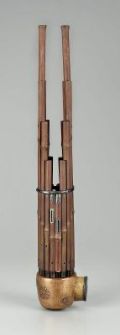mendoza hotel
hoteles mendoza
mendoza argentina
mendoza turismo
tour mendoza
flauta flute
flautas flutes
quena kena
siku zampoña
shakuchachi
flute headjoint
flutes baroque
world flutes
flute world
mendoza viajes
transporte mendoza
argentina hoteleria
excursión mendoza
aconcagua
bodegas mendocinas
bodega
malbec
vino mendoza
fista vendimia
caminos del vino
puente del inca
mendoza hotelMendoza (5507)
Argentina
hoteles mendoza
mendoza argentina
mendoza turismo
tour mendoza
flauta flute
flautas flutes
quena kena
siku zampoña
shakuchachi
flute headjoint
flutes baroque
world flutes
flute world
mendoza viajes
transporte mendoza
argentina hoteleria
excursión mendoza
aconcagua
bodegas mendocinas
bodega
malbec
vino mendoza
fista vendimia
caminos del vino
puente del inca
Mendoza (5507)
Argentina
hoteles mendoza
mendoza argentina
mendoza turismo
tour mendoza
flauta flute
flautas flutes
quena kena
siku zampoña
shakuchachi
flute headjoint
flutes baroque
world flutes
flute world
mendoza viajes
transporte mendoza
argentina hoteleria
excursión mendoza
aconcagua
bodegas mendocinas
bodega
malbec
vino mendoza
fista vendimia
caminos del vino
puente del inca
mendoza hotelMendoza (5507)
Argentina
hoteles mendoza
mendoza argentina
mendoza turismo
tour mendoza
flauta flute
flautas flutes
quena kena
siku zampoña
shakuchachi
flute headjoint
flutes baroque
world flutes
flute world
mendoza viajes
transporte mendoza
argentina hoteleria
excursión mendoza
aconcagua
bodegas mendocinas
bodega
malbec
vino mendoza
fista vendimia
caminos del vino
puente del inca
Mendoza (5507)
Argentina

World Flutes Festival

we take care
of our
environment
of our
environment
flute world, world flutes, quena, quenas, flauta, flute, saxophone, saxofon, latinamerican music, folklore, moseño, moceno, tarka, siku, zampoñas, andean, andina, andes, world flutes, flutes, bansuri, shakuhachi, winds, hotel mendoza, mendoza hoteles, mendoza alojamiento, hostal mendoza, hotel, pablo salcedo, kaval,
Flute flutes native american flute flauta quena shakuhachi bansuri flute world flauta flute flute flauta flutes miyazawa sankyo flute pear flutes muramatsu flute drelinger head joint world music festival
Love Silence
Peace
Amuki
Compassion
Peace
Amuki
Compassion
LOVE THE WORLD
FOUNDATION
FOUNDATION

NEW !! YOGA FLUTE MEDITATIONS

Sho
Is a Japanese free reed musical instrument that was introduced from China during the Nara period. It is modeled on the Chinese sheng, although the sho tends to be smaller in size. It consists of 17 slender bamboo pipes, each of which is fitted in its base with a metal free reed. Two of the pipes are silent, although research suggests that they were used in some music during the Heian period.
The instrument's sound is said to imitate the call of a phoenix, and it is for this reason that the two silent pipes of the sho are kept - as an aesthetic element, making two symmetrical "wings." Like the Chinese sheng, the pipes are tuned carefully with a drop of wax. As moisture collected in the sho's pipes prevents it from sounding, performers can be seen warming the instrument over a small charcoal brazier when they are not playing. The instrument is one of the three primary woodwind instruments used in gagaku, Japan's imperial court music. Its traditional playing technique in gagaku involves the use of tone clusters called aitake, which move gradually from one to the other, providing accompaniment to the melody.
A larger size of sho, called u (derived from the Chinese yu), is little used although some performers, such as Hiromi Yoshida, began to revive it in the late 20th century.
Is a Japanese free reed musical instrument that was introduced from China during the Nara period. It is modeled on the Chinese sheng, although the sho tends to be smaller in size. It consists of 17 slender bamboo pipes, each of which is fitted in its base with a metal free reed. Two of the pipes are silent, although research suggests that they were used in some music during the Heian period.
The instrument's sound is said to imitate the call of a phoenix, and it is for this reason that the two silent pipes of the sho are kept - as an aesthetic element, making two symmetrical "wings." Like the Chinese sheng, the pipes are tuned carefully with a drop of wax. As moisture collected in the sho's pipes prevents it from sounding, performers can be seen warming the instrument over a small charcoal brazier when they are not playing. The instrument is one of the three primary woodwind instruments used in gagaku, Japan's imperial court music. Its traditional playing technique in gagaku involves the use of tone clusters called aitake, which move gradually from one to the other, providing accompaniment to the melody.
A larger size of sho, called u (derived from the Chinese yu), is little used although some performers, such as Hiromi Yoshida, began to revive it in the late 20th century.


